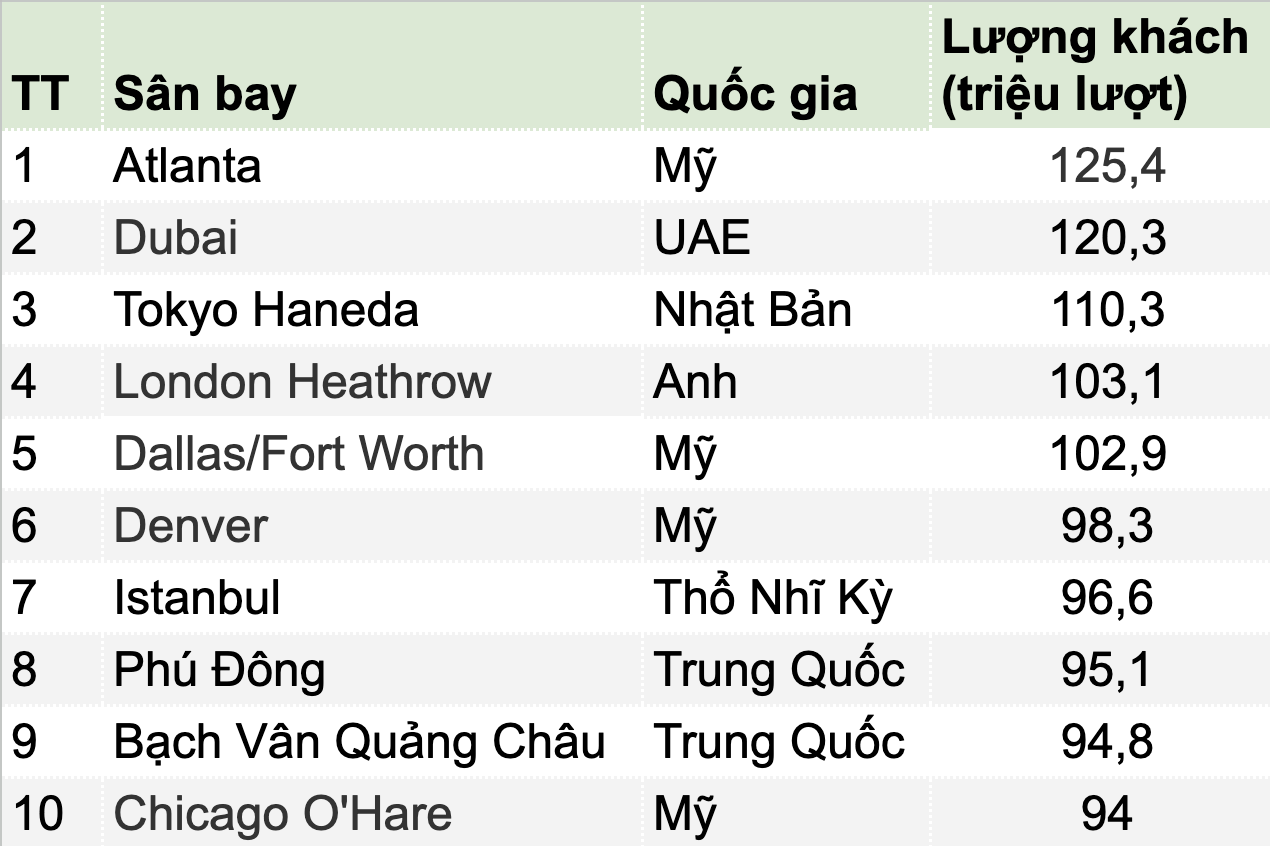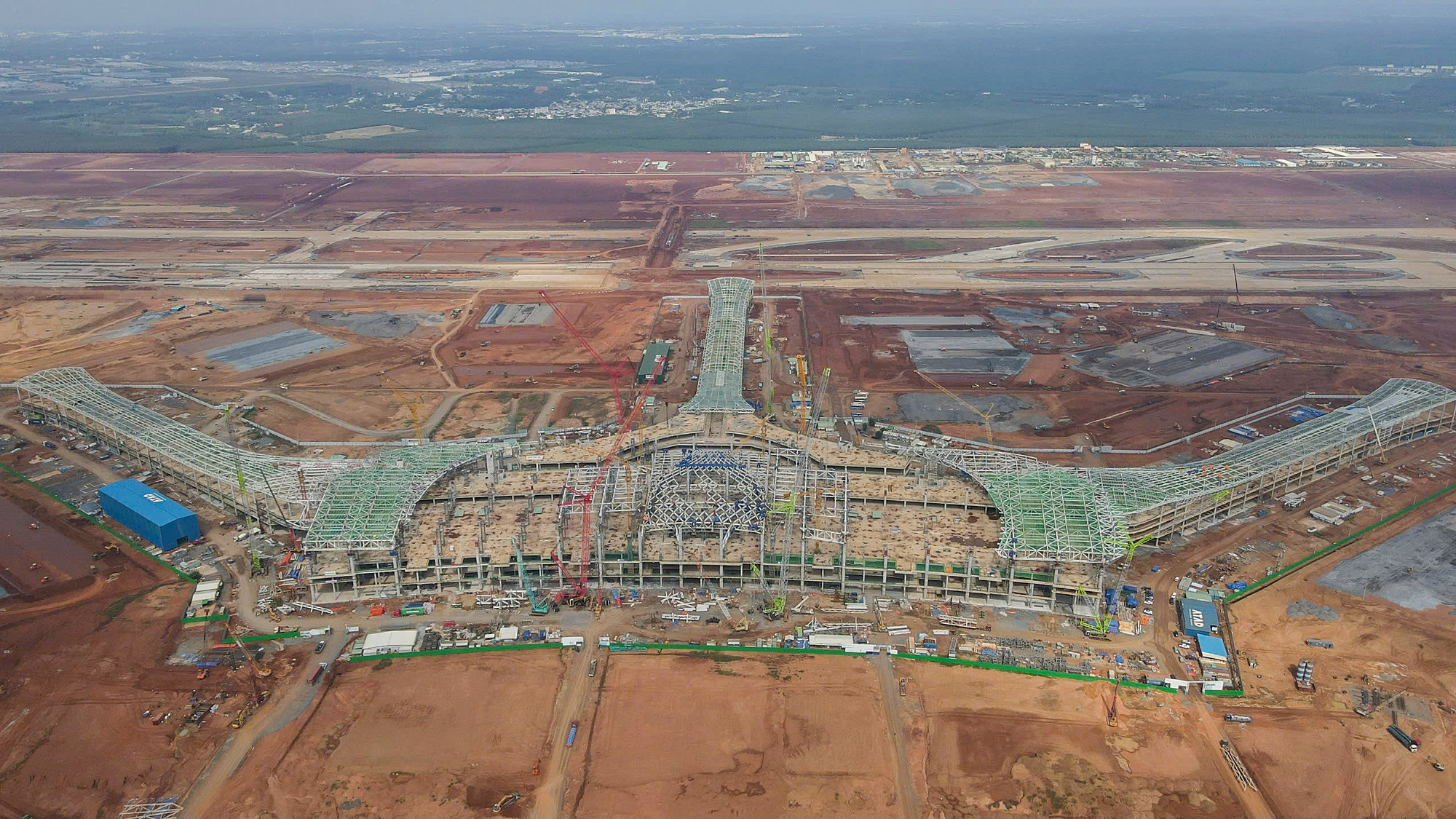This information was revealed in a recent report titled "The Rise of Mega-Hub Airports" by OAG, an organization specializing in travel and aviation data.
According to OAG, five airports served over 100 million passengers last year: Atlanta, Dallas/Fort Worth (USA), Dubai (UAE), Tokyo Haneda (Japan), and London Heathrow (UK).
 |
The 10 busiest airports in the world in 2024. Source: OAG |
The 10 busiest airports in the world in 2024. Source: OAG
The organization predicts that several large-scale airports currently under construction in Asia are likely to join the 100 million passenger club within the next decade. OAG identifies this group as including Terminal 5 of Changi airport (Singapore), Hong Kong international airport, Suvarnabhumi (Thailand), Incheon (South Korea), the new Manila airport (Philippines), and Long Thanh (Vietnam).
Long Thanh international airport is being built in Dong Nai province on approximately 5,000 hectares with a total investment of over 336,000 trillion VND, divided into three phases. The first phase is currently underway and is expected to be substantially completed by the end of this year. In phase one, Long Thanh will have a capacity of 25 million passengers and 1.2 million tons of cargo annually.
Phase two of the airport is expected to be completed in 2035, with an additional passenger terminal and runway, increasing capacity to 50 million passengers and 1.5 million tons of cargo annually. The final phase will equip the airport to handle 100 million passengers and 5 million tons of cargo per year by 2030-2040.
 |
Long Thanh international airport project in early 2025. Photo: Phuoc Tuan |
Long Thanh international airport project in early 2025. Photo: Phuoc Tuan
According to OAG, Asian governments view these aviation hubs as drivers of domestic and foreign investment, stimulating tourism and job creation. Asia is not only building more airports but also developing larger, smarter, and better-connected ones.
Asian governments see these aviation centers as catalysts for domestic and foreign investment, tourism, and employment. This process is driven by rapid economic growth, an expanding middle class, and urbanization.
OAG notes that these modern mega-airports are utilizing biometric technology, artificial intelligence (AI), automation, and sustainable solutions to support scalable growth without compromising passenger experience and operational efficiency.
Anh Tu












